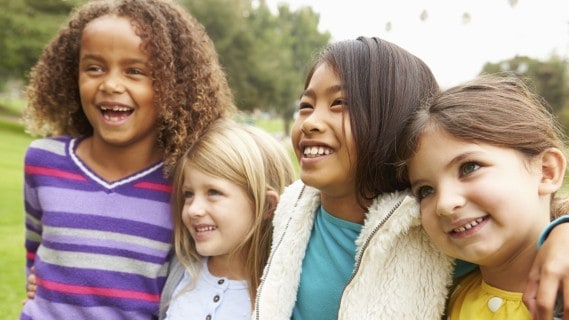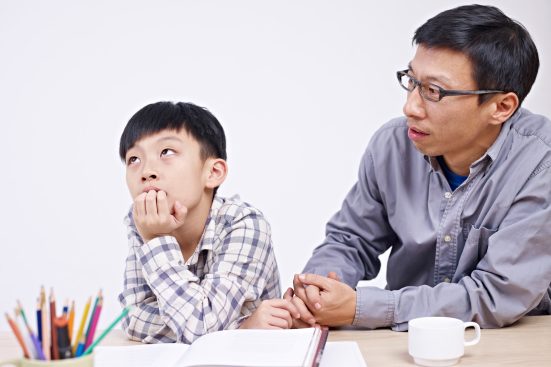One of the important questions I ask the children and teens I work with is this: “would you please tell me about your friends”.
This question sometimes surprises families. Having made an appointment to see a psychologist they are expecting questions about feelings, emotions and life challenges, and not necessarily those about who they hang out with. But it’s essential for me to know about young people’s friendships because research shows peer relationships are vital to children and teen’s positive mental health.
For example, studies show that children and teens with good friendships record higher levels of happiness than children and teens without these friendships. Other studies show that young people with positive peer relationships are less likely to act in disruptive and challenging ways. Other studies suggest that young people with positive peer relationships are more likely than others to achieve better educational outcomes. There have also been numerous studies suggesting young people who experience genuine bullying (i.e. not just “unkind” behavior) are more likely to experience mental health issues as adults.
Therefore, as professionals who work with young people, we should not just be aware of their peer relationships, but also actively supporting and facilitating children and teens to achieve these. How precisely we do this will of course depend on our job roles. There are three areas of potential intervention:
1) Facilitation of positive friendship opportunities. For example, this means supporting parents to facilitate time for children/teens with peers outside school hours and to be engaged in some extra-curricular activity, helping children/young people be motivated to do this (ie sometimes providing education to them as to why it matters) and supporting young people to initiate social peer contact themselves.
2) Supporting young people to deal effectively (confidently, kindly and with resilience) with unkind/insensitive peer behavior and resolve conflict independently– as well as directly intervening when/if more serious conflict or bullying is present
3) Helping young people improve their social confidence and social skills – to get better at noticing others feelings, being kind, using humour, resolving conflict, saying hello, being assertive and making conversations.
In this article, I’d like to focus on this social skill in particular – helping young people to have a positive conversation with peers.
Having a positive conversation with a friend sounds like a relatively minor topic – but in fact, it matters a great deal. If children and young people know how to talk in a friendly way to their peers, they are more likely to have their peers enjoy their company– which then supports friendships and positive mental health.
How do we coach children and teens in conversational skills? What makes a good conversation in the first place? Obviously different elements of conversations matter differently to different personalities (I personally enjoy a conversation with lots of humour, my husband on the other hand enjoys lots of statistics ?) However, there are at usually four key factors.
First – having a good conversation means being prepared to share your opinions and ideas. Children and teens don’t have to talk nonstop, be the life of the party or the most extraverted person in the room – but if they are almost always silent – it means their peers will not be able to get to know them or feel positive emotion around them.
For example, extremely quiet and anxious young people who don’t speak much at all often become more socially isolated over time. I gently tell these anxious young people about the importance of sharing and talking with their peers. In sessions we prepare (write down or brainstorm) sentences for them to use. I use an acronym to do this (especially with older kids and teens) – SHOPS. S stands for School, H is for Hobbies, OP is for Other People, and S is for Screens. Each word/phrase is a potential topic for opinions and experiences. After we brainstorm and write sample sentences in each of these topics, we role play them. For some children/teens, just brief reminders: “What new about you will you tell your friends about today?” can get this process started.
Second, and in contrast to the “talking” strategy above, having a good conversation also involves some listening. People who talk for a long period of time about their own interests without taking a listening break, and without checking in or asking questions of their peers – are less likely to develop good friendships. I’m sure you have an adult colleague/friend/acquaintance or two who sometimes forgets this important fact!
Children need coaching in this skill. Some young people in particular find this tough – for example, as you would be aware, this is a particularly hard skill for children and teens on autism spectrum. Some of these young people talk for too long and too often without being aware of how bored/frustrated their peers are feeling. With these young people I practice “listening breaks” with them when we actually look at a clock and practice “mouth shutting” and I talk for a few minutes and then thank them afterwards for listening, tell them how it made me feel (“I liked talking to you then, I felt like you were interested in me and I feel like doing it again sometime”)
For older children and teens, I build this skill further by talking about not just listening but asking others questions to help their friends talk.
Again, I use the SHOPS acronym to help children and teens prepare questions for a certain peer/friendship group. For example I ask them – what “School” questions could you ask Zoe (“what are you going to do your project on?”), what “Hobbies” questions could you ask Jane (Did you win at netball last night), what “Other People” questions could you ask Tom (What games do you play with your brother) and what “Screens” questions could you ask Milly (Did you see that YouTube video about the cat playing the recorder?).
We usually write these down and roleplay them. A brief intervention could simply be asking them to set a reminder on their phone/using a “Ask Questions” sticker on their desk, or use a classroom poster/morning note.
Third, having a good conversation also means using an unrecognized but vital skill I like to call using “follow on sentences”. Follow on sentences are statements we make after someone speaks to acknowledge what they have said and help them know we are interested in them and have heard what they said. follow on sentences are often quite short – like “okay”, “uh huh”, “cool”, “I see” – or “interesting”. Sometimes follow on sentences are a second question about what someone has said.
Sometimes we forget how important this skill is – but then we have a conversation with someone who doesn’t use any follow on sentences, and we remember again how vital it is to help conversations go well.
Fourth and finally, another part of a good conversation is using appropriate facial expressions. I explain this to young people by saying this: “we try to have a similar expression on your face to the expression your friend has on their face – if they look sad, then we look concerned. If they look happy, they we usually look happy too”
For children on the spectrum, they sometimes have “blank” facial expressions and need coaching and reminders to alter their facial expressions to match the person they are talking to. We can gently point this out to children/teens (and use mirrors in working with them when appropriate).
So, to recap: there are at least four elements of a good conversation – some listening (and asking questions), some talking and sharing, using follow on sentences and having matching expressions.
Children and young people who are anxious/shy, who have frustration management issues, attention/concentration problems, or who are on the spectrum – will often be lacking in some of these friendly conversation skills, and as a result have poorer social relationships. The better they get at these skills, the more likely it is they will develop better friendships and experience less conflict – which will then improve their emotional health. I think they are therefore worthy of our attention in the work we do with kids and teens.
If have a child who needs some extra coaching in this or you’d like some resources to use with them in doing this, in the children’s learning centre we have a video about these elements for children and two activity sheets about using the SHOPS acronym and planning conversations with their friends. There is also an A3 classroom poster for classrooms about using SHOPS and parts of “friendly conversations”. To access the video, click here.



